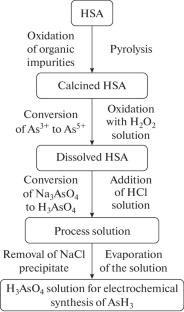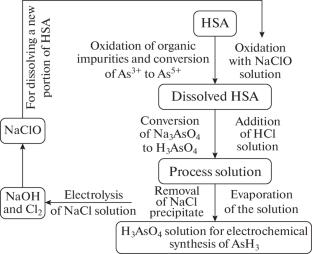水解亚砷酸钠制砷酸溶液工艺研究
IF 0.6
4区 工程技术
Q4 ENGINEERING, CHEMICAL
引用次数: 0
摘要
水解亚砷酸钠(HSA)是化学武器销毁的产物,含有大量的砷,可用于生长aiiibv型半导体的单晶和外延层及其固溶体。提出了一种以高浓度过氧化氢溶液为氧化剂,从人体白蛋白生产砷酸溶液的方法。该工艺可用于6N纯砷的生产。本文章由计算机程序翻译,如有差异,请以英文原文为准。


Technology for Processing Hydrolytic Sodium Arsenite to Produce Arsenic Acid Solutions
Hydrolytic sodium arsenite (HSA), a product of chemical weapons destruction, contains a significant amount of arsenic, which can be used for the growth of single crystals and epitaxial layers of AIIIBV-type semiconductors and solid solutions based on them. A process is proposed for producing an arsenic acid solution from HSA using a highly concentrated hydrogen peroxide solution as an oxidizing agent. This technique can be applied in the 6N purity arsenic production.
求助全文
通过发布文献求助,成功后即可免费获取论文全文。
去求助
来源期刊
CiteScore
1.20
自引率
25.00%
发文量
70
审稿时长
24 months
期刊介绍:
Theoretical Foundations of Chemical Engineering is a comprehensive journal covering all aspects of theoretical and applied research in chemical engineering, including transport phenomena; surface phenomena; processes of mixture separation; theory and methods of chemical reactor design; combined processes and multifunctional reactors; hydromechanic, thermal, diffusion, and chemical processes and apparatus, membrane processes and reactors; biotechnology; dispersed systems; nanotechnologies; process intensification; information modeling and analysis; energy- and resource-saving processes; environmentally clean processes and technologies.

 求助内容:
求助内容: 应助结果提醒方式:
应助结果提醒方式:


